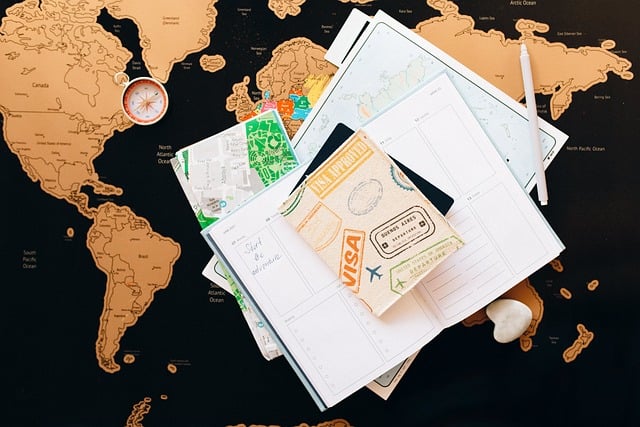Dutch Trade Agreements: Global Partnerships

The Netherlands is a global trading powerhouse, known for its strategic location, advanced logistics infrastructure, and open economy. As one of the world’s largest exporters and importers, the Netherlands has established a network of trade agreements and partnerships that facilitate international commerce and economic growth. These agreements not only benefit Dutch businesses but also strengthen the country’s position as a key player in the global economy. This article explores the Netherlands’ trade agreements, their significance, and how they contribute to global partnerships.
The Netherlands’ Role in Global Trade
Strategic Location
The Netherlands is strategically located in Europe, with access to major markets such as Germany, France, and the United Kingdom. Its world-class ports, including the Port of Rotterdam (Europe’s largest port), and Schiphol Airport, make it a gateway for goods entering and leaving Europe.
Open Economy
The Dutch economy is highly open, with trade accounting for a significant portion of its GDP. The country is a leading exporter of agricultural products, chemicals, machinery, and technology.
Trade Balance
The Netherlands consistently maintains a trade surplus, exporting more than it imports. Key export partners include Germany, Belgium, and the United Kingdom, while major import partners are China, Germany, and Belgium.
Dutch Trade Agreements
The Netherlands benefits from trade agreements at multiple levels:
- European Union (EU) Trade Agreements: As an EU member state, the Netherlands is part of the EU’s extensive network of trade agreements.
- Bilateral Agreements: The Netherlands has bilateral trade agreements with specific countries outside the EU.
- Multilateral Agreements: The Netherlands participates in global trade agreements through organizations like the World Trade Organization (WTO).
EU Trade Agreements
As an EU member, the Netherlands is part of over 40 trade agreements that the EU has negotiated with countries and regions worldwide. These agreements provide Dutch businesses with preferential access to key markets.
Key EU Trade Agreements
- Canada (CETA): The Comprehensive Economic and Trade Agreement (CETA) eliminates tariffs on 98% of goods traded between the EU and Canada, benefiting Dutch exporters of agricultural products, machinery, and chemicals.
- Japan (EPA): The EU-Japan Economic Partnership Agreement (EPA) removes tariffs on 97% of goods, opening opportunities for Dutch exporters in sectors like food, pharmaceuticals, and technology.
- South Korea (FTA): The EU-South Korea Free Trade Agreement (FTA) has boosted trade in automobiles, electronics, and chemicals.
- Mercosur (Pending): The EU-Mercosur trade agreement (with Argentina, Brazil, Paraguay, and Uruguay) aims to create one of the world’s largest free trade zones, benefiting Dutch agricultural and industrial exporters.
Benefits for the Netherlands
- Market Access: Dutch businesses gain access to over 70 markets through EU trade agreements.
- Tariff Reductions: Lower tariffs make Dutch products more competitive internationally.
- Regulatory Alignment: Harmonized standards and regulations reduce trade barriers.
Bilateral Trade Agreements
In addition to EU agreements, the Netherlands has bilateral trade agreements with specific countries to strengthen economic ties and address unique trade needs.
Key Bilateral Agreements
- United States: The Netherlands and the U.S. have a strong trade relationship, with agreements covering sectors like agriculture, technology, and energy.
- China: The Netherlands has signed agreements with China to promote trade and investment, particularly in technology and infrastructure.
- United Kingdom (Post-Brexit): Following Brexit, the Netherlands has worked to maintain strong trade ties with the UK through bilateral agreements and EU-UK trade deals.
Benefits for the Netherlands
- Targeted Opportunities: Bilateral agreements address specific trade priorities and sectors.
- Strengthened Partnerships: These agreements deepen economic and diplomatic ties with key partners.
Multilateral Trade Agreements
The Netherlands is an active participant in global trade agreements through organizations like the WTO and regional initiatives.
Key Multilateral Agreements
- World Trade Organization (WTO): The Netherlands adheres to WTO rules, promoting free and fair trade globally.
- Regional Comprehensive Economic Partnership (RCEP): Although not a direct participant, the Netherlands benefits from increased trade flows in the Asia-Pacific region.
- Transatlantic Trade and Investment Partnership (TTIP): While negotiations are stalled, the Netherlands supports efforts to strengthen EU-U.S. trade ties.
Benefits for the Netherlands
- Global Standards: Multilateral agreements promote consistent trade rules and standards.
- Economic Stability: These agreements contribute to global economic stability and growth.
Trade and Investment Promotion
The Dutch government actively promotes trade and investment through initiatives like:
- Netherlands Enterprise Agency (RVO): Provides support to Dutch businesses looking to expand internationally.
- Trade Missions: Dutch trade missions, led by government officials, help businesses explore new markets and establish partnerships.
- Innovation and Sustainability: The Netherlands promotes trade in innovative and sustainable sectors, such as renewable energy and circular economy solutions.
Challenges and Opportunities
Challenges
- Global Uncertainty: Geopolitical tensions and trade disputes can disrupt global trade flows.
- Brexit: The UK’s exit from the EU has created uncertainties for Dutch businesses.
- Supply Chain Disruptions: The COVID-19 pandemic highlighted vulnerabilities in global supply chains.
Opportunities
- Digital Trade: The Netherlands is well-positioned to lead in digital trade and e-commerce.
- Sustainability: Dutch expertise in sustainable agriculture, energy, and water management offers opportunities for global partnerships.
- Emerging Markets: Expanding trade with emerging markets in Asia, Africa, and Latin America presents growth opportunities.



